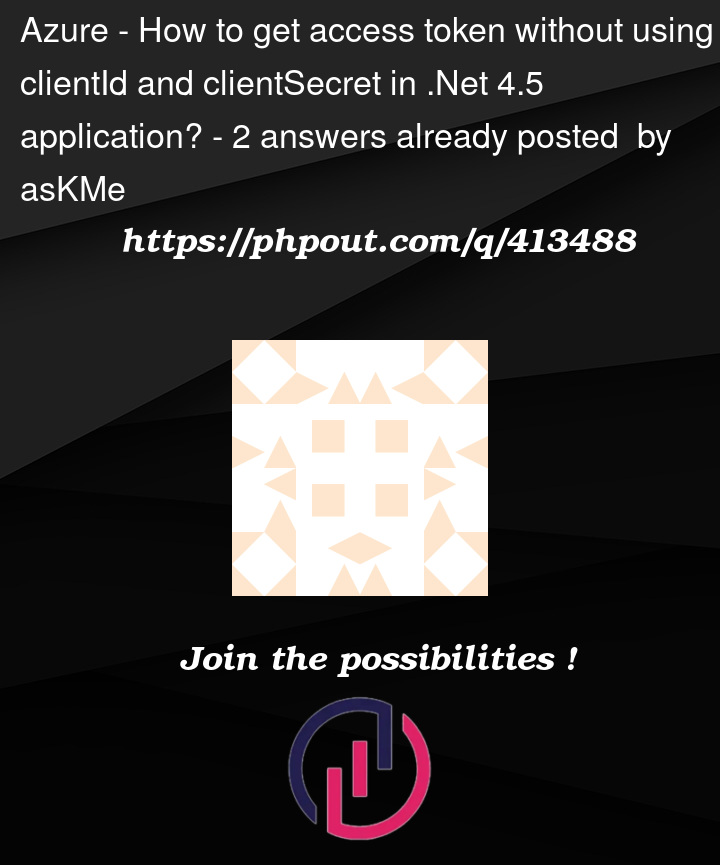Request you to understand my question, before you downgrade or suggest delete. As I have to use the REST API with .Net framework 4 and 4.5. My applications are hosted both in Azure ( as app service) and on Azure VM.
I know there Azure has a concept of managed identity. However, I’m trying to implement fetching secrets from Azure Key vault using REST API. The applications are using .Net framework 4 and 4.5.
the code is as below:
string keyVaultUrl = "https://KeyVault.vault.azure.net";
string secretName = "Test";
string tenantId = "tenantId";
string clientId = "clientId";
string clientSecret = "clientSecret Vaule ";
I’m getting a access token by calling a custom method as below:
string accessToken = await GetAccessToken(tenantId, clientId, clientSecret);
The above code works fine.
For me, its like fetching one secret from the Key vault by exposing another secret.
I have seen lots of post says using "managed identity". As said earlier "I have to use the REST API with .Net framework 4 and 4.5. My applications are hosted both in Azure ( as app service) and on Azure VM." I believe in this case ""managed identity" is not applicable – specifically when its comes to REST and .Net 4/.net 4.5 and when application does not supports required Key vault and Entra ID related namespace ( e.g. key vault "Microsoft.Azure.KeyVault" namespace.)
My question is what is the best ways to store "clientSecret" as its getting used to fetch the secrets from Key vault ? Where can I store the client "clientSecret" and use in the code?
Hope my question is understandable. Please let me know. Thanks




2
Answers
As far as i know, the common method is to store secrets, such as the secret to access the key vault, in environment variables and then accessing the env-vars through your code.
Is this helpfull?
For an application to make it as Public you need to set Allow public client flows as YES:
But according to Microsoft Username/Password flow is not recommended due to security issues.
You can also make use of InteractiveBrowserCredential flow which do not need client secret:
If the above does not resolve the issue, then you have to Store the
clientSecretin environment variables. This is a simple method and keeps sensitive data out of your codebase as suggested by Provadis.clientSecretbefore using it to obtain the access token.